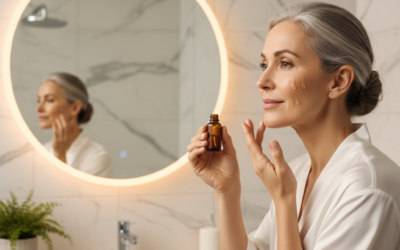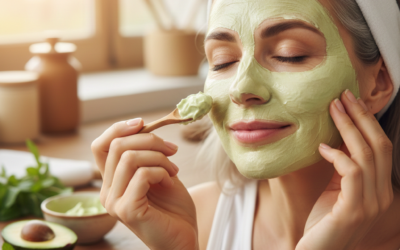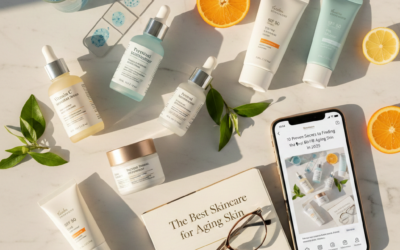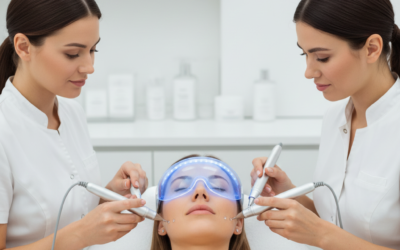The Science of Hydration: Dermatologist’s Guide to Moisturizers. How moisturizers work.
Table of Contents
The Science of Hydration: A Dermatologist-Informed Guide to Choosing the Best Face Moisturizer.
Moisturizer is arguably the single most critical, non-negotiable step in any effective skincare routine. Far beyond simply making the skin feel soft, a high-quality facial moisturizer functions as a strategic, daily defense mechanism. It supports the integrity of the skin’s protective layer—the stratum corneum—against environmental stressors, pollution, and climate extremes. Understanding how moisturizers work and which ingredients suit your unique complexion is the key to unlocking long-term skin health.
The Essential Role of Daily Moisturizing
The primary function of a moisturizer is to prevent Transepidermal Water Loss (TEWL). When the skin’s barrier is compromised, water escapes easily, leading to dryness, irritation, and potential inflammation. Daily moisturizing actively addresses four core areas of skin health:
- Barrier Restoration: Moisturizers replenish the skin’s natural lipids (fats), which act as the “cement” between the skin cells (the “bricks”). This reinforcement shields underlying tissues from infection and environmental damage, a benefit cited by dermatologists as crucial for managing conditions like eczema and chronic dryness.
- Anti-Aging and Texture Improvement: Hydrated skin is plump skin. By increasing water content in the stratum corneum, moisturizers immediately reduce the appearance of fine lines and wrinkles. Consistent use helps maintain elasticity, resulting in a smoother, more uniform complexion.
- Balancing Oil Production: Contrary to what some believe, skipping moisturizer can worsen oily skin. When the skin detects severe dehydration, it attempts to compensate by overproducing sebum, leading to shininess and breakouts. A lightweight, non-comedogenic moisturizer signals the oil glands to regulate production, achieving a healthier balance.
- Prepares Skin for Actives: Using moisturizer over powerful serums (like Vitamin C or retinol) helps to seal those ingredients in, enhancing their efficacy while simultaneously reducing potential irritation, making your entire regimen more comfortable and effective.

The Foundation of a Healthy Routine: A complete skincare regimen relies on the synergy between potent actives and essential barrier repair. High-concentration Vitamin C Serum is applied first to actively neutralize free radicals, while the subsequent layer of rich moisturizer (utilizing humectants, emollients, and occlusives) seals in hydration and fortifies the skin’s protective lipid matrix. This dual approach ensures both targeted treatment and long-term skin health.

Decoding Moisturizer Science: The Three Pillars
To truly understand a moisturizer’s efficacy, you must identify its blend of three critical ingredient categories:
| Ingredient Type | Function | Key Examples | Best For |
|---|---|---|---|
| Humectants | Attract and draw water into the skin from the environment or the deeper layers. | Hyaluronic Acid (HA), Glycerin, Sodium PCA, Panthenol (Pro-Vitamin B5) | All skin types, especially dehydrated skin. |
| Emollients | Smooth and soften the skin by filling gaps between cells. They improve flexibility and repair the skin barrier. | Ceramides, Squalane, Fatty Acids, Shea Butter, Jojoba Oil | Dry, normal, and combination skin. |
| Occlusives | Form a physical, protective barrier on the skin’s surface to physically prevent water from evaporating (TEWL). | Petrolatum (Petroleum Jelly), Dimethicone, Lanolin, Beeswax | Very dry or compromised skin. |
The most recommended and effective formulas, such as the CeraVe Moisturizing Cream or SkinCeuticals Triple Lipid Restore 2:4:2, succeed by employing a synergistic blend—using humectants to pull in moisture and emollients/occlusives to lock it in.
Beyond Hydration: Advanced Actives in Moisturizers
Modern face moisturizers are not just for basic hydration; they are sophisticated delivery systems for potent active ingredients. Incorporating these actives can streamline your routine and provide targeted treatment while simultaneously maintaining essential barrier health.
- Niacinamide (Vitamin B3): A multifaceted ingredient, Niacinamide is excellent for almost all skin types. For oily and acne-prone skin, it helps regulate sebum production, minimize the appearance of pores, and reduce inflammatory acne. For all skin types, it strengthens the lipid barrier, reduces redness, and visibly brightens overall tone. Look for concentrations between 2% and 10% for optimal efficacy without irritation.
- Peptides: These are short chains of amino acids that serve as foundational building blocks for structural proteins like collagen, elastin, and keratin. When included in a moisturizer, signal peptides encourage skin cells to produce more collagen, leading to firmer skin and improved elasticity over time. They are particularly beneficial for mature or aging skin as a gentle alternative to stronger actives.
- Vitamin C Serum (L-Ascorbic Acid): As a powerful antioxidant, Vitamin C is crucial for daytime defense. It actively neutralizes free radical damage caused by UV rays and pollution, brightens dark spots and discoloration, and is essential for collagen synthesis. It is most effective when applied as a high-concentration serum after cleansing and before your moisturizer to maximize absorption and effectiveness. Pairing Vitamin C with a moisturizer containing Vitamin E offers critical dual environmental protection.
- Gentle Retinoids (Retinyl Esters/Bakuchiol): While stronger retinoids are typically found in serums, some night creams include gentle retinoid derivatives (like retinyl palmitate or retinyl linoleate) or natural alternatives like Bakuchiol. These ingredients encourage cellular turnover, gently improving texture and reducing fine lines, making the nighttime moisturizing step highly restorative.
Choosing the Right Formula for Your Skin Type
Selecting the correct texture and ingredient profile is paramount to maximizing results and avoiding skin issues like clogged pores or irritation.
Dry Skin
Dry skin lacks both water and natural oils. The goal is intense hydration and barrier repair.
- Formula: Opt for rich, thick creams or ointments (especially at night).
- Key Ingredients: Ceramides, Cholesterol, Fatty Acids, and heavy emollients like Shea Butter. These components directly restore the skin’s lipid matrix. Vanicream Daily Facial Moisturizer is a dermatologist favorite for its high ceramide and hyaluronic acid content in a budget-friendly formula.
Oily and Acne-Prone Skin
Oily skin often needs hydration without the heaviness of oil-based ingredients. The wrong product can lead to comedones (clogged pores).
- Formula: Look for oil-free, non-comedogenic gels or ultra-light emulsions.
- Key Ingredients: Lightweight humectants like Hyaluronic Acid and Glycerin, Niacinamide (Vitamin B3) to regulate sebum production and minimize pores, and Zinc PCA for oil control. The Neutrogena Hydro Boost Water Gel is a highly recommended example of a formula that delivers intense hydration with a weightless texture.
Combination Skin
Combination skin requires a strategic approach, as the T-zone (forehead, nose, chin) is typically oily, while the cheeks and jawline may be normal or dry.
- Formula: A lightweight lotion or gel-cream designed to balance both zones is often the best choice. Alternatively, some dermatologists advise a zone-treatment approach: applying a lighter gel to the oily T-zone and a slightly richer cream to the drier cheeks.
- Key Ingredients: Versatile hydrators like Squalane and Aloe Vera provide moisture without excessive weight.
Sensitive or Reactive Skin
Sensitive skin is prone to redness, stinging, and allergic reactions. Minimalism is key.
- Formula: Choose hypoallergenic, soothing formulas labeled fragrance-free and alcohol-free.
- Key Ingredients: Soothing agents like Allantoin, Bisabolol, or Oat Extract. Avoid synthetic dyes, parabens, and essential oils, which are common irritants. Look for simple formulas that prioritize barrier repair.
By understanding the science behind humectants, emollients, and occlusives, and aligning these ingredients with your specific skin needs, you can move beyond simple hydration to achieve a truly resilient, youthful, and healthy complexion.






